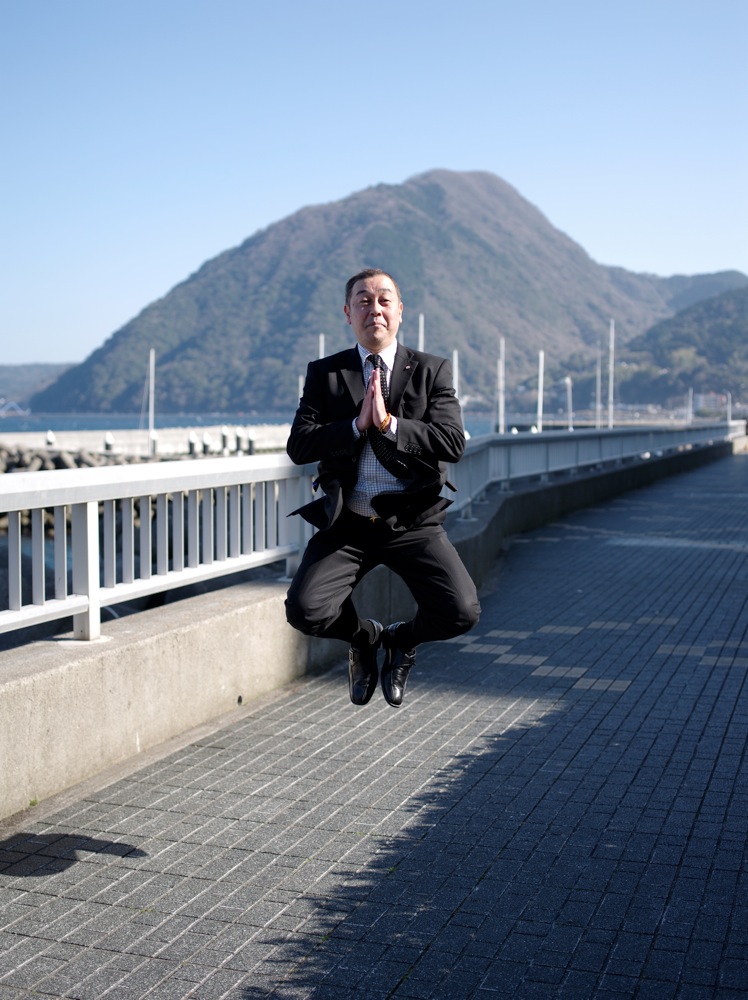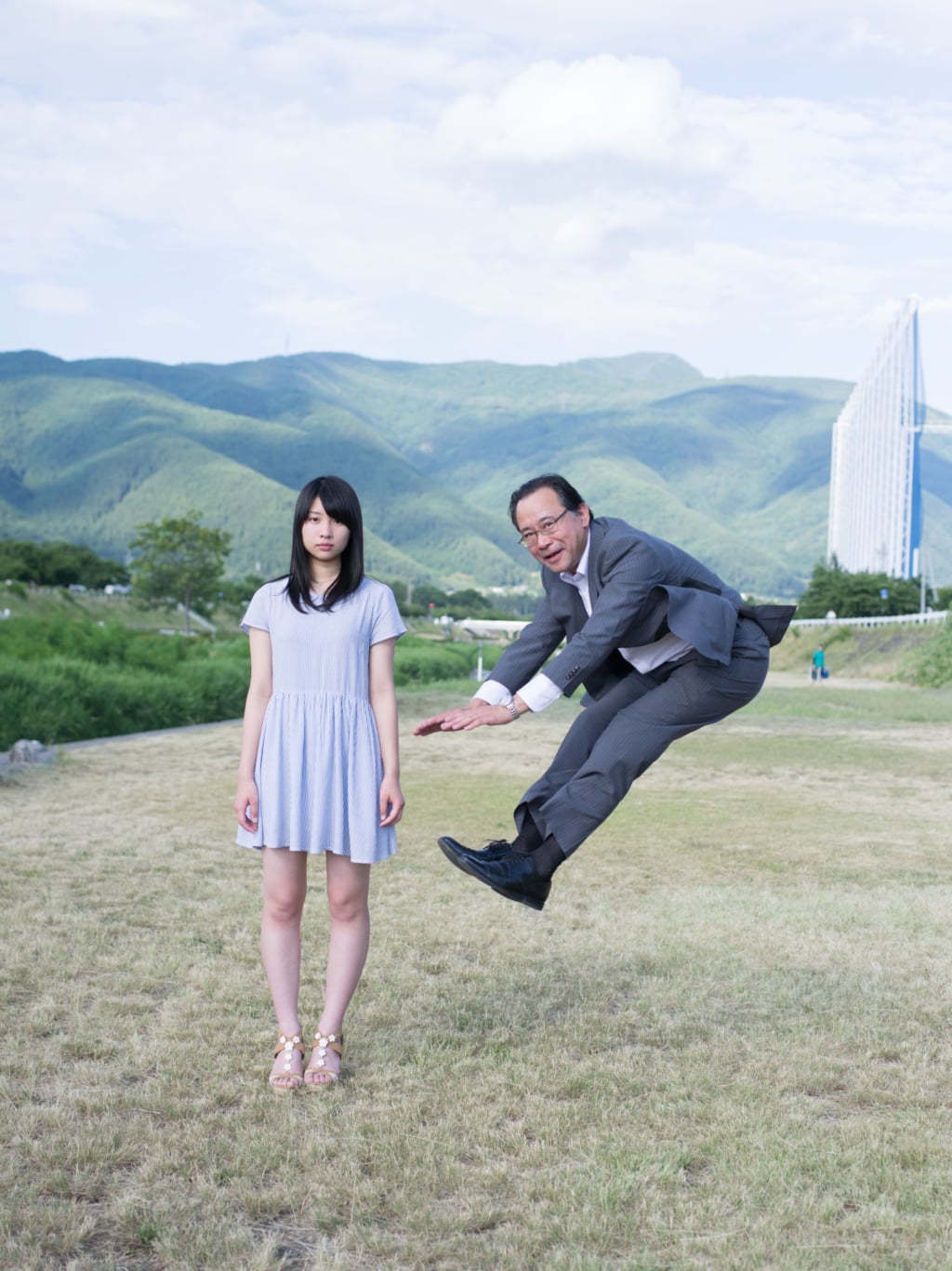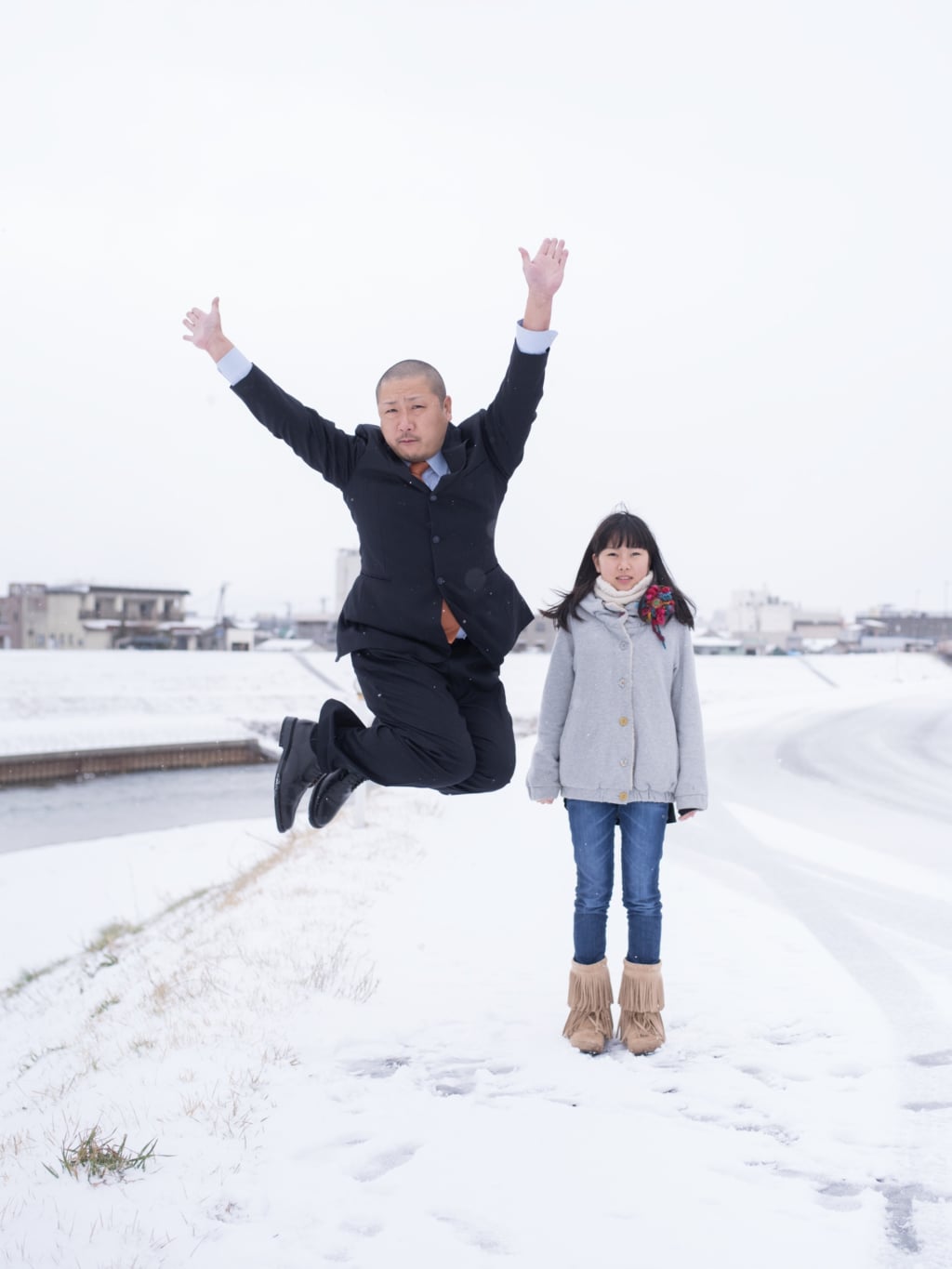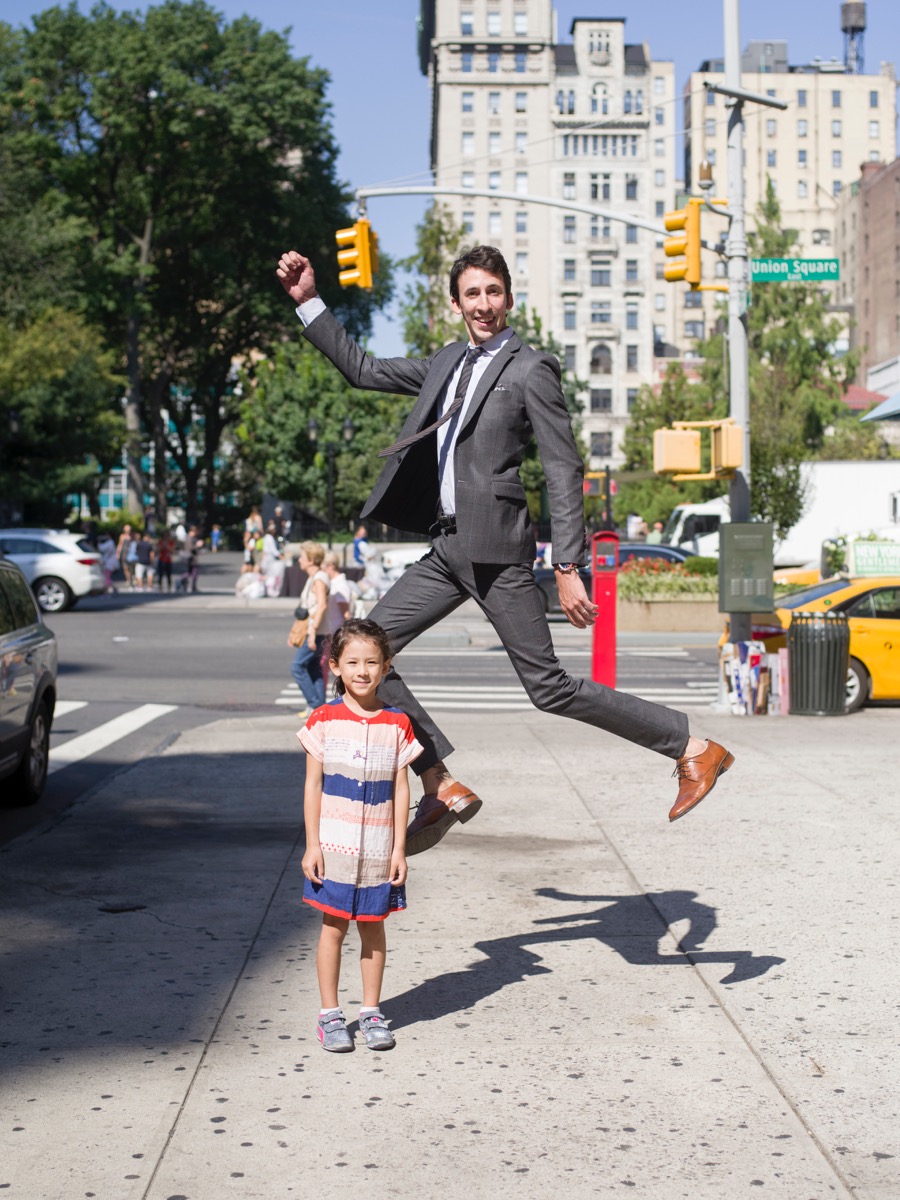Yuki Aoyama Sends Clichés Flying
In the book 'Solaryman', the photographer humorously depicts the stereotypes that surround Japanese businessmen.

“Solaryman (2005-2015)” de Yuki Aoyama © Libro Arte
Once Japanese metropolitan men reach the age of thirty, they are described by those younger than them as ossan. This informal, slightly derogatory term makes fun of these men in suits, who are deemed arrogant and who all seem to have the same haircut. These men—more commonly known as salarymen—are examined by Japanese photographer Yuki Aoyama in the book Solaryman (2005-2015), released in 2016.
The photographer, born in Nagoya in 1978, is also a gallery owner (Yukai Hands) and publisher (Yukai Hands Publishing). In his book, he seeks to use simple messages to illustrate the complexity of human relationships specific to Japanese society.
Jumping over conventions
The title Solaryman combines the words sora (sky) and salaryman. This is because, to move beyond the stereotypes and step outside of the framework, businessmen are presented here in mid-air, releasing their energy by leaving conventions behind, with a childlike attitude. The photographer’s father, who was a businessman himself, is no longer alive. This project is therefore also a kind of homage. As Yuki Aoyama explains in the text accompanying the photographs: ‘Having no experience of my own as a businessman, I feel deeply moved and full of hope when I see these fathers, who sweat and fight to keep their company afloat, transforming into superheroes flying through the air.’
The book, put together over a decade, gathers together several series. Some of the photographs show the men alone, or with colleagues or friends, in an urban environment. They are all dressed the same. We see them hard at work, focused and conscientious, a hint of mischief sometimes visible in their expression. Others include these men’s daughters, who appear next to them with their feet on the ground and standing up straight, in somewhat of a role reversal.
In this book, Yuki Aoyama pays tribute to these men, and gives a nod to these individuals who are the beating heart of the country’s economy.
Solaryman (2005-2015) (2016), a book of photographs by Yuki Aoyama, is published by Libro Arte.

“Solaryman (2005-2015)” by Yuki Aoyama © Libro Arte

“Solaryman (2005-2015)” by Yuki Aoyama © Libro Arte

“Solaryman (2005-2015)” by Yuki Aoyama © Libro Arte

“Solaryman (2005-2015)” by Yuki Aoyama © Libro Arte

“Solaryman (2005-2015)” by Yuki Aoyama © Libro Arte

“Solaryman (2005-2015)” by Yuki Aoyama © Libro Arte

“Solaryman (2005-2015)” by Yuki Aoyama © Libro Arte
TRENDING
-
A House from the Taisho Era Reveals Its Secrets
While visiting an abandoned building, Hamish Campbell discovered photographs the owner had taken of the place in the 1920s.

-
The Taboo-Breaking Erotica of Toshio Saeki
The master of the 1970s Japanese avant-garde reimagined his most iconic artworks for a limited box set with silkscreen artist Fumie Taniyama.

-
With Meisa Fujishiro, Tokyo's Nudes Stand Tall
In the series 'Sketches of Tokyo', the photographer revisits the genre by bringing it face to face with the capital's architecture.

-
Masahisa Fukase's Family Portraits
In his series ‘Family’, the photographer compiles surprising photos in which he questions death, the inescapable.

-
Hajime Sorayama's Futuristic Eroticism
The illustrator is the pioneer for a form of hyperrealism that combines sensuality and technology and depicts sexualised robots.





